While many personal injury cases are based around direct forms of physical harm like car accidents or traumatic injuries, there are also many other types to consider. One sadly common example here is that of product defects, and one especially worrisome area where this can be a concern is within the realm of defective child toys.
At the offices of William Rawlings & Associates, we're here to provide the best personal injury attorney services you'll find around Salt Lake City, Provo, Draper and nearby parts of Utah - including not just common claim types like car accidents, but also many others including child injury cases and more. Let's look at some of the kinds of injuries that children can sustain from defective toy products, the classifications that resulting claims are often placed into, how liability is established in these cases, and how our attorneys will work around the common defenses that toy manufacturers tend to fall back on in such cases.
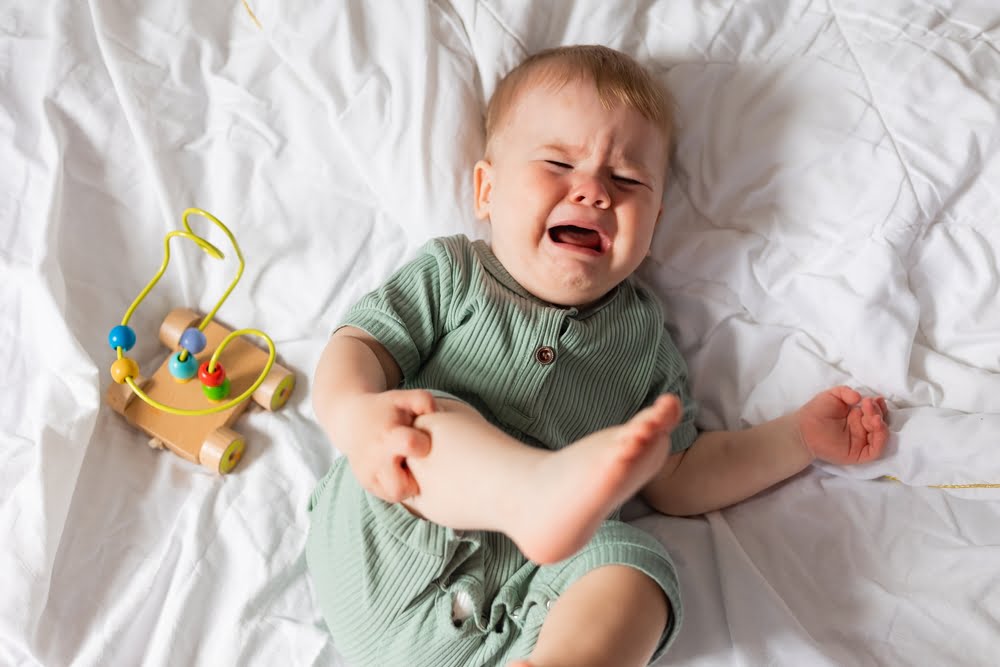
Sadly, there are a number of possible injuries that children can sustain from defective toy products. They range in severity all the way from minor bruising and scrapes to more serious damage like lacerations, burns, choking hazards, suffocation risks, electrical shocks and other similar concerns.
While it's certainly essential to keep a close eye on young ones while they're playing with toys of any kind, even then it's sometimes not enough to prevent injuries - particularly in cases where products are defective.
In the legal world, claims resulting from defective child toys can be placed into a few general categories. These are as follows:
When it comes to building a case against toy manufacturers for injuries caused by defective products, there are two general approaches our attorneys may take:
If you're filing a claim against a toy manufacturer for a defective product, there are several defenses they may try to use. These can include:
So remember, if your child has been hurt by a faulty toy, call William Rawlings & Associates today for expert legal representation and advice! We fight for the rights of parents and children around SLC, Provo, Draper and other parts of Utah on a regular basis, helping them win the compensation they deserve for medical bills, pain and suffering, lost wages and more. Consultations are always free, so don't hesitate to reach out and speak with us about your case today. Your child deserves justice!
While various social media entities have created whole new ways for people to communicate and share their lives, there are some potentially significant downsides to improper usage of these sites in certain situations. One great example: Within a personal injury case, where improper care with social media posts during your case may have an adverse effect on your results.
At the offices of William Rawlings & Associates, we're proud to assist clients around Salt Lake City, Provo, Draper and nearby parts of Utah with all their personal injury claim needs, whether you're filing for a car accident claim or one of numerous other types like dog bite claims, child injuries and more. We regularly advise clients on care with social media posts following any kind of injury or accident where they're making a claim, helping ensure they do not damage their case accidentally. Here are some basics on why social media posts about your injury can be risky, plus some best practices on how to behave in the social sphere during a personal injury claim.

To help understand why you need to be careful with social media posts about your injury, it's important to first understand the process of discovery in a personal injury case. During this process, both sides will gather evidence and information from each other to build their case. This includes requesting documents, conducting depositions, and more.
And as you may have guessed already, social media posts can be used as evidence during this process. This means that any careless or inappropriate posts you make about your injury on social media can end up being used against you in court. This can have a major impact on the outcome of your case and potentially limit the compensation you receive.
So what types of posts should you avoid during a personal injury case? Here are some examples:
To protect your personal injury claim and avoid any potential negative impacts from social media posts, here are some best practices to follow:
One important facet of proper social media usage during a personal injury claim is to not delete any old posts that may be used as evidence. This can actually be seen as tampering with evidence and could harm your case even further.
Furthermore, it's easier for computer experts to retrieve deleted posts than you may think. Instead, follow the best practices mentioned above and refrain from posting anything that could damage your case in the first place.
Many personal injury cases end with a settlement between the parties involved. It's important to note that any discussion or posts about your settlement on social media can also have negative consequences. For example, if you post about receiving a large settlement and then shortly after purchase an expensive item, this could be used to argue that you were not truly injured and did not need as much compensation.
In fact, there may be specific limitations or restrictions on what you can say or post about your settlement depending on the terms of the agreement. Always consult with your attorney before making any public statements.
In short, social media usage during a personal injury case should be approached with caution and care. Any posts related to your injury or claim could potentially harm your case and limit the compensation you receive. It's always best to consult with your attorney and limit or refrain from social media use during this time.
At the offices of William Rawlings & Associates, our experienced personal injury attorneys are here to guide you through the process and help ensure you receive the maximum compensation for your injuries. Contact us today for a free consultation for legal needs around SLC, Provo, Draper or any nearby part of Utah.
While the vast majority of personal injury claims and cases that are brought will be resolved via a settlement between the two parties involved, there are definitely some exceptions to this. In cases where the parties simply cannot agree on liability or other key parts of a settlement, a jury trial may be required to ultimately settle the matter.
At the offices of William Rawlings & Associates, we're here to offer the very best personal injury attorney services you'll find around Salt Lake City, Draper, Provo and other parts of Utah. Our attorneys assist with a huge range of cases, from car and truck accident liability to wrongful death, dog bite cases and many others. While most of our cases do end up settled outside of court, as is common in this industry, we're also experienced in handling cases that proceed all the way to jury trial as well. Here's a breakdown of the general stages and process of a jury trial for a personal injury case, plus what to be thinking about if you're part of a case that has made it to trial.
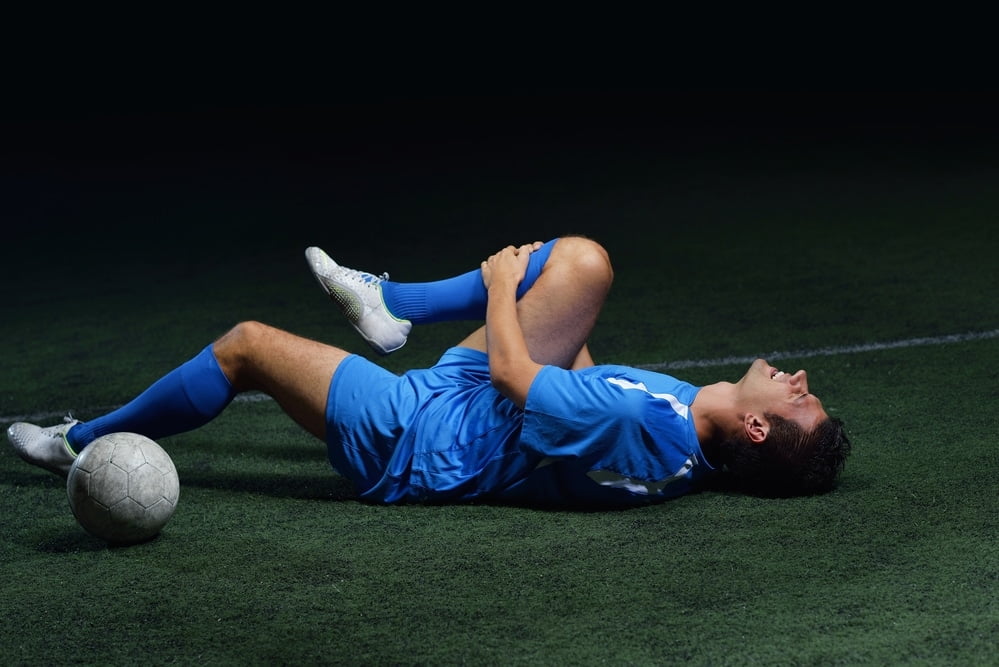
Before we get started, a quick word on bench trials - that is, trials that do not involve a jury, and are overseen only by a judge. These are significantly less common than jury trials in personal injury cases, but they do happen.
In most bench trials, the judge will be responsible for making all decisions and rulings related to the case, while also determining relevant facts and evidence. Bench trials can sometimes lead to quicker resolutions than jury trials, but not always - it depends on how much evidence is available and how much is being disputed.
Our subsequent sections will cover the typical stages of a jury trial - many of these will be similar to parts of bench trials, but some will be different.
Assuming your case has required a jury trial, the first step will be to select jurors for the trial. This process takes place in court, and is referred to as "voir dire" - a French term meaning "to speak the truth." The goal of this process is for each side to determine who they believe would be a good juror for the case, then filter out any who may have biases or prejudices.
Jurors will be asked questions by both sides and must answer truthfully - this often includes questions about their backgrounds, beliefs and other relevant information that could impact the outcome of the case. Ultimately, a pool of jurors is chosen from these initial questioning rounds - usually around 12 or so for a civil case.
Once the jury is selected, both sides will have the opportunity to give opening statements that outline their position and what they plan to prove during the trial. These statements are not meant as evidence themselves, but more of a roadmap for how each side views the case and its key points.
As we get into the meat of the trial, each side will present their evidence and testimony from relevant witnesses. This can include expert opinions, eyewitness accounts, and more - all meant to support or refute claims made by either side. Each witness will also be subject to cross-examination by the opposing attorney.
Witnesses for a personal injury case can vary widely, from medical professionals to accident reconstruction experts and more. They will also commonly include the plaintiff themselves, and may include friends or family members who can speak to the impact of the injury on their loved one.
Once all evidence and testimony has been presented, both sides will have the opportunity to make closing arguments - a final attempt to sway the jury in their favor. This is often where attorneys will summarize key points of evidence or highlight specific inconsistencies in the opposing side's story.
The plaintiff's attorney will typically make the first closing argument, followed by the defendant's attorney. Typically, the plaintiff will get the "last word" via a short rebuttal to the defense's closing argument.
Now that both sides have made their case, the judge will instruct the jury on what they are to consider when making their decision. This can include specific laws, relevant evidence and other considerations that may impact the outcome of the case.
Once instructed by the judge, jurors will retreat to a private room where they will discuss the case amongst themselves and come to a decision. This process can take anywhere from a few hours to several days, depending on the complexity of the case. Once they have reached a verdict, it will be delivered in open court and read aloud by the judge.
It's important to note that either side has the right to appeal a jury's decision if they feel there were errors made during the trial. This can lead to a higher court reviewing all evidence and potentially overturning or changing the original decision.
If you have any further questions about jury trials in personal injury cases, our experienced attorneys at William Rawlings & Associates are always here to help. We're happy to walk you through this process and make sure you feel comfortable every step of the way for any personal injury case across SLC, Draper, Provo or any other part of Utah.
There are a number of common causes of car accidents out there, and sadly one of the most well-known is the accident caused by a drunk driver. If you've been hit by someone who you believe to be a drunk driver, you may be eligible for significant damages and compensation for injuries or other issues - and knowing what to do in the immediate aftermath is important here.
At the offices of William Rawlings & Associates, we're here to provide clients around Salt Lake City, Draper, Provo and other parts of Utah with any car accident attorney service they require, including for cases where a drunk driver is believed to be involved. Here are some of the things to be doing and thinking about in the immediate aftermath of such an accident.
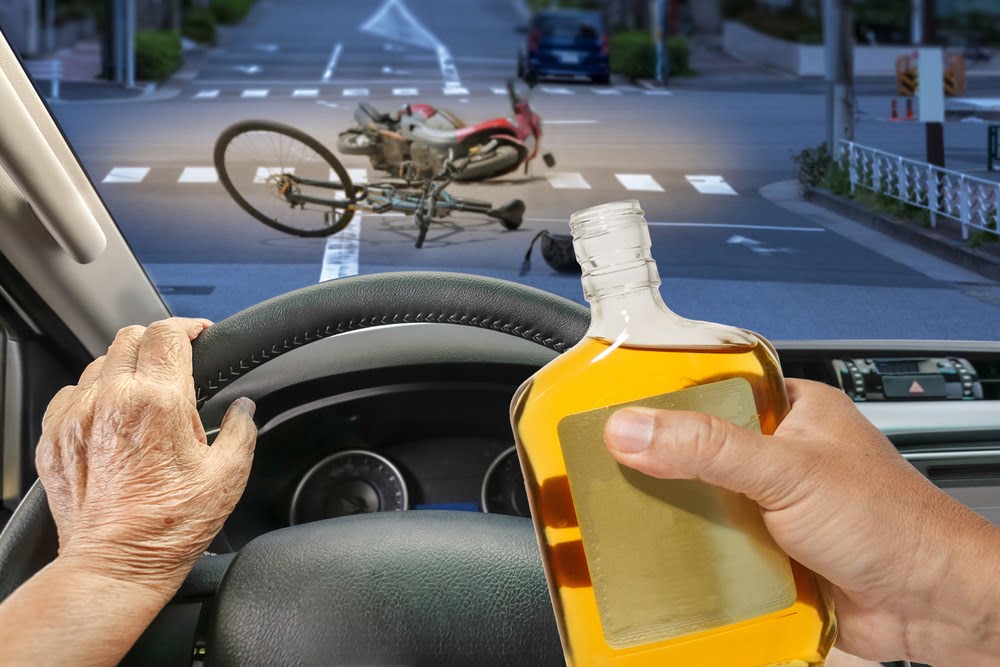
No matter what, the first and most important thing to do is to call for medical attention, and make sure that anyone involved in the accident has professional care and treatment if they need it. This can help ensure that any injuries are properly dealt with, and also provides evidence of what occurred at the scene of the accident.
Furthermore, this is just a matter of basic priorities. While we know that legal issues are important, making sure that everyone on the scene is safe and healthy should always be the first priority in any situation.
In addition to medical care, it's also important to call police officials at the scene of the accident as soon as possible. They can help document what transpired, provide statements and evidence for later use, and testify on what they saw at the scene of the accident. This is important for building a case in court, as well as helping to ensure that any criminal activity (such as the drunk driving) is addressed accordingly.
When police arrive, they will almost certainly give the driver a Breathalyzer test to determine whether they are driving under the influence of alcohol. This is important evidence that can be used in court if necessary and make sure that the drunk driver is held responsible for their actions.
Once important areas like medical attention and police presence have been taken care of, it's also important to make sure that any evidence or documentation at the scene is captured and collected. This may include damages to either vehicle in the accident, statements from witnesses, video footage, photos of skid marks or other debris at the scene - anything that could help prove what happened.
In some cases, there may even be evidence of the drinking prior to the accident, such as empty bottles or cans found inside either car. This is important for proving negligence, and should also be taken into consideration when considering legal action.
When dealing with a car accident potentially caused by a drunk driver, it's important to remember that you have rights and legal options to pursue. In such cases, contacting an attorney can be beneficial in ensuring your rights are protected and that any necessary action is taken against the responsible party.
An attorney will serve several important roles in such cases, including helping to ensure that any evidence and documentation is properly dealt with, addressing insurance companies or other legal entities as necessary, and working to get the compensation you deserve for any injury or damages.
One element that your attorney may discuss with you, depending on the circumstances and what happened, is the issue of fault. In some cases, the accident may not be completely caused by the drunk driver - for instance, if you were distracted at the time or driving recklessly yourself. In such cases, it's important to note that you may not necessarily be entitled to all of the compensation available - as those responsible for any portion of the accident will likely split any costs and damages accordingly.
This is a nuanced area that will vary depending on the case, which is why it's important to consult with a qualified car accident lawyer who can provide personalized advice and support.
At William Rawlings & Associates, we proudly offer clients around Salt Lake City, Draper, Provo and other parts of Utah the representation they need for any kind of car accident situation - including ones involving drunk drivers. If you would like to learn more about how we can help, contact us today.
In part one of this two-part series on depositions in car accident liability cases, we looked at some of the ways plaintiffs can prepare for these important sessions and what to think about during them. Plaintiff performance during a deposition can often be very important for the case at hand, and ensuring you're up-to-speed on all relevant details is important.
At the offices of William Rawlings & Associates, we're happy to offer quality car accident attorneys for clients around Draper, Salt Lake City, Provo and nearby areas of Utah. Today's part two of our series will shift gears a little and look at the important next steps that come after you've finished giving deposition testimony, plus what you and your attorney will be thinking about moving forward.
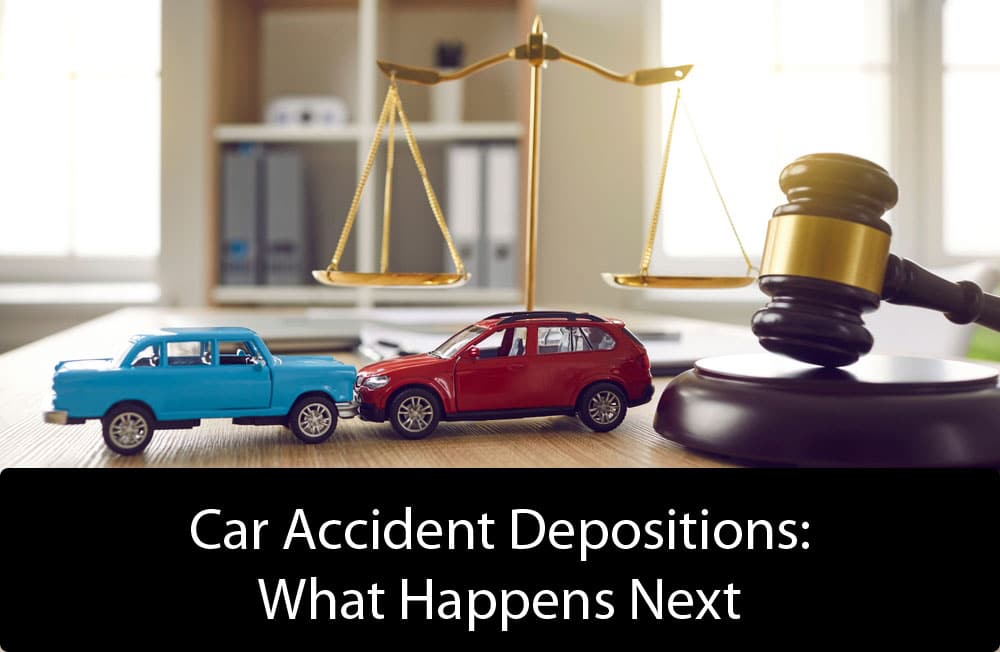
Every deposition will feature the presence of a court reporter, who will transcribe the entire session and create a court-admissible transcript. They will usually do so via use of a stenotype—a device not unlike a typewriter that uses an alphabet of phonetic symbols to capture speech. The transcript generated from this will be the official record of all that you said in the deposition, and it can be used later on if needed for testimony or other legal purposes.
Once the transcript has been created, attorneys from both parties will look over it and make sure that there are no errors or inconsistencies. This process ensures that the transcript is accurate, so that when and if it's used later on there won't be any confusion.
Once this has happened, the transcript moves one step closer to being legally admissible.
Depending on several factors, including the severity of your injuries, the court may require you to submit to a medical exam. This is important for several reasons - first, it will provide additional evidence as to the nature and extent of your injuries, which can be helpful in assessing damages. Second, if your injury requires ongoing care and treatment, this will help establish that continuing care is necessary.
Now, how this care is acquired is very important to think about. If you go through your insurance company, for instance, remember that this entity may be biased - they are looking out for their own interests and may not always be looking to provide the most beneficial care. As a result, it may be better to request independent medical exams from third-party providers who can provide an unbiased assessment.
Your attorney will be able to help you navigate this process and ensure that all necessary documents are filed properly so that your case can move forward.
In some cases, such as if medical examination reveals that your injuries may have been caused by a third party, you may need to give additional depositions. Your attorney will be able to advise on whether this is necessary and how best to proceed.
Once both parties have agreed that no further depositions are necessary, the next step in the process will be for them to attempt to reach a settlement through mediation. This is a voluntary process in which both parties meet with an independent mediator who works towards finding an agreement that is mutually beneficial.
The goal of mediation is to avoid going to court and having your case decided by a jury. It's an opportunity for both parties to discuss the details of their respective cases and negotiate in a way that both sides may be satisfied with. Your attorney can provide you with guidance on how best to prepare for this important step.
Most car accident injury cases are able to be settled during mediation, however if an agreement can not be reached, then the case will proceed to trial. Your attorney will have advised you from the beginning of the process about what kind of settlement they believe to be fair and reasonable, and they will also be able to advise you on whether or not the offer proposed in mediation is appropriate for your case.
In any case where a settlement cannot be reached during mediation, the case will proceed to trial and a jury will decide who is liable for the accident. At this point, all of the evidence collected and testimony given during depositions will be used to help prove your case. It is important that you have prepared thoroughly and presented yourself well in any deposition or medical examination prior to trial, as this evidence will be used to support or refute your claims.
Your attorney will provide you with advice and guidance throughout the trial process, and help ensure that your best interests are being served. They will also be able to advise you on when it may be appropriate to accept a settlement offered by the other party, and when to continue fighting in court.
Depending on the outcome of the trial, either party may wish to appeal if they are not satisfied with the verdict. This process is often complicated and costly, so it is important to discuss all your options with your attorney before deciding whether or not to proceed.
At the offices of William Rawlings & Associates, we have extensive experience in handling car accident injury cases and can help guide you through the entire process. Contact us today to learn more about how we can help you with your case in Draper, SLC, Provo or any other part of Utah.
There are a few parts of the proceedings in a given car accident liability case where the plaintiff will be directly involved, and one of the most notable in some such cases is a deposition. A deposition refers to an out-of-court setting where sworn testimony is given with the purpose of being used later in court during discovery, and plaintiffs who are testifying during discovery need to know a few things.
At the offices of William Rawlings & Associates, we're here to offer the very best car accident attorney services you'll find in Draper, Salt Lake City, Provo and nearby parts of Utah. We assist clients with every part of their case here, including any depositions that are required and the preparation you need for them. This two-part blog series on car accident depositions will begin by going over some basic plaintiff preparations and expectations for a deposition, while part two will look at the important steps that take place after your deposition is finished.
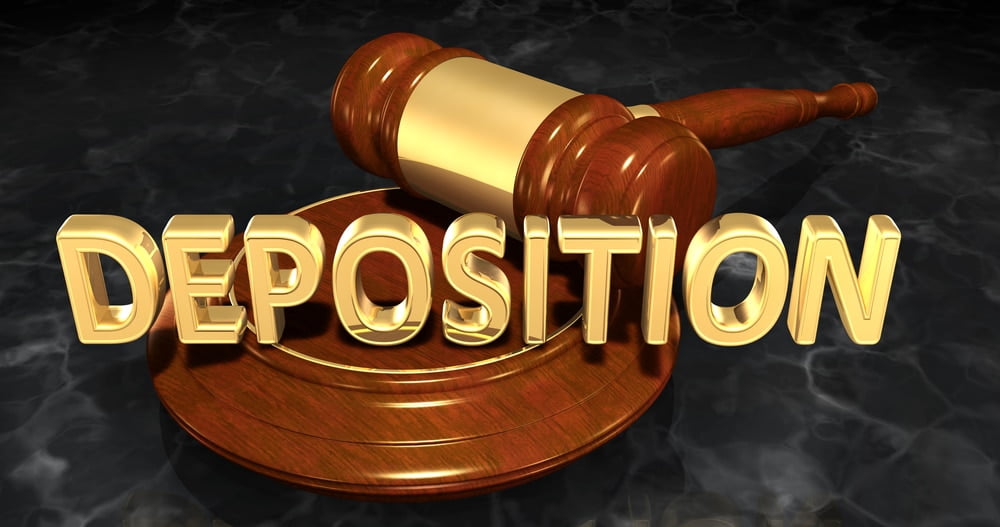
During the days and weeks leading up to your deposition, it’s essential that you take the time to become well-prepared for it. This will mean learning all of the details of your case and understanding exactly what points are most relevant to the proceedings. You should also familiarize yourself with those who may be present in the room during the deposition, such as attorneys from both sides.
Speaking of attorneys, this is one area that highlights the immense value of working with a qualified car accident attorney throughout your case. An experienced car accident attorney can show you exactly how you should be preparing for your deposition - they can even do things like ask sample questions, review details of your case and answer any questions you have about the deposition process.
In virtually every car accident deposition, the goal of the defense attorney(s) will be the same in nature: To lock the plaintiff into a restrictive "version" of their story that can cast doubt on their case in court. This is why it’s essential to always be focused on the truth and avoid exaggerating or changing your story while under oath - no matter how much pressure is coming from the defense attorneys.
For many, this goes back to strong preparation and having a car accident attorney who can assist in such preparations. From there, remaining calm and composed during the deposition is always an important factor - being aware that the defense attorneys may be trying to bait you into saying something which could reflect poorly on your case is essential.
Down these lines, it's generally good to avoid getting too wordy or speaking too much during your deposition. While you should always provide complete and honest answers to questions, saying more than necessary can often lead to a complicated or confusing answer - something which can easily be used against you in court by the defense attorneys.
If you're unsure of whether you should speak up about a given topic, it's usually best to wait and consult with your car accident attorney first. As mentioned, having an experienced car accident lawyer to assist during the deposition is an invaluable resource that can provide valuable guidance throughout the entire process.
One common mistake that some car accident plaintiffs make during their depositions is forgetting that non-verbal communication such as facial expressions, body language and other reactions are still recorded. Even if you don't say anything while under oath, the defense attorneys may use your non-verbal response to a question as evidence against you in court.
For this reason, it's important to always remain as neutral and composed as possible - even when you’re being asked a difficult or uncomfortable question. Doing this will provide the greatest opportunity for success in your case, while also ensuring that the defense won't have any evidence to use against you from your deposition.
As we noted above, the defense attorneys may very well try to “fish” for answers that can cast doubt on your case - such as asking you something that has nothing to do with the accident itself, but instead gets at other unrelated areas of your personal life.
Although it's important to answer all questions truthfully and accurately during deposition, it’s also wise to keep your answers focused on the accident itself - and just let your car accident attorney handle any questions that are out of bounds. Doing so can help you avoid getting tripped up on unrelated topics and keep the deposition as straightforward for you as possible.
With this information in mind, those who have been injured in a car accident should be better prepared to handle the deposition process. Ultimately, having a car accident attorney to assist with your case is – as always - the best way to ensure that you’re well-prepared for all aspects of the liability proceedings.
At the offices of William Rawlings & Associates, our experienced car accident lawyers are here to help you through the entire process - from filing for damages all the way to deposition preparation. Contact us today to learn more about how we can assist with your case, whether you're located in SLC, Draper, Provo or any other part of Utah.
There are a few kinds of injuries that tend to be more common than others in public settings, and one of these is the slip and fall injury. A variety of issues can cause people to slip on certain surfaces, and a number of different specific injuries may be sustained by those who are the victims of such accidents.
At the offices of William Rawlings & Associates, we provide detailed personal injury attorney services to clients around Provo, Salt Lake City and nearby areas of Utah. We cover every injury type you could think of, including car accident injuries, child injuries, trampoline park injuries and more. Here are some of the most common injuries we see from clients in slip and fall cases, plus how they may play into your liability claim if you believe your injuries were caused by negligence or similar issues on the part of another party.
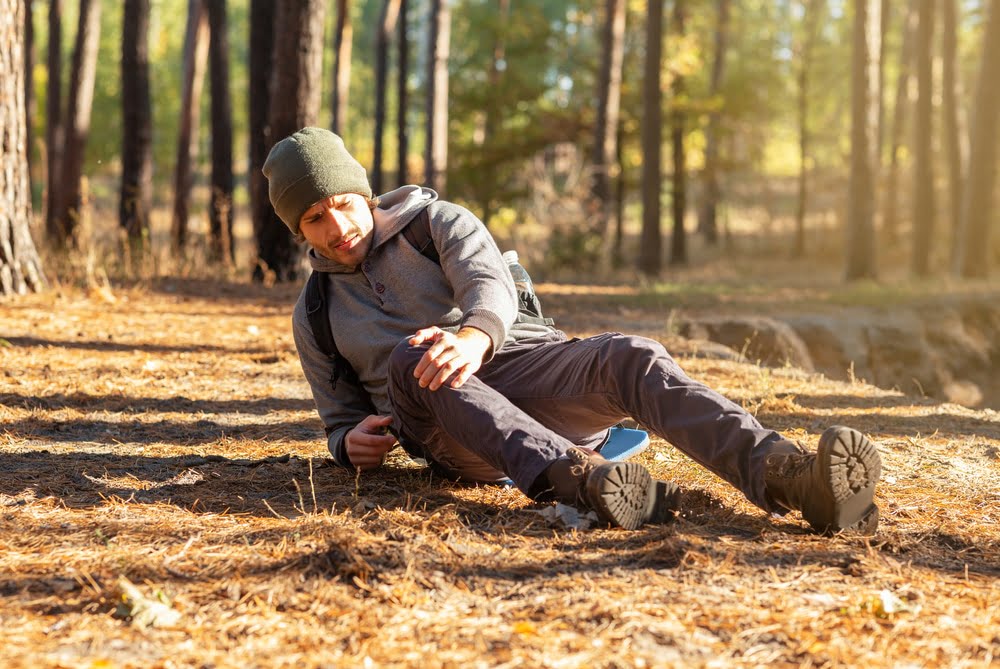
Some of the most common types of slip and fall injuries are soft tissue injuries such as muscle sprains or strains. These usually involve a tearing or stretching of the tendons, ligaments, muscles, or other related tissues after sudden tension is applied to them. Soft tissue injuries can be particularly painful and may take longer to heal than many other kinds of injuries.
Soft tissue injuries can also include fall injury symptoms like swelling, bruising, or pain. If you are experiencing any of these symptoms, it’s important to see a medical professional as soon as possible for diagnosis and treatment.
Particularly in areas like the wrists or ankles, which people sometimes use to try and support themselves as they're falling or to break the fall, sprains are another common injury. Usually a sprain occurs when a ligament is stretched or torn beyond its normal range of motion. Sprains can be quite painful and, depending on their severity, may require physical therapy or other treatment in order to make sure they heal properly.
More serious slip and fall injuries involve broken bones or fractures. Broken bones are usually caused by a large force applied to one area of the body, such as when someone falls from a great height or lands awkwardly. Fractures can be particularly painful and may take months or even longer to heal properly.
Some of the most common here are hip fractures, spine fractures, and wrist fractures. Depending on the severity of the fracture, surgery may be necessary to ensure it heals properly and that additional pain is minimized.
Another common slip and fall injury is knee damage. This includes things like ACL tears, meniscus tears, or general ligament sprains in the knee. These can be particularly problematic for those who are physically active, as it may take quite a bit of time for them to fully heal and regain their agility.
In some cases, physical therapy may be recommended to help strengthen the muscles around the knee and increase flexibility. If this is the case, it's possible the costs of physical therapy could be included in your eventual settlement or judgement if you've filed a personal injury claim.
Usually in areas like the shoulder or finger, dislocations may also be a possible outcome of a slip and fall incident. A dislocation occurs when two bones are forcibly separated, causing extreme pain and swelling. Depending on the severity of the injury, medical professionals may need to realign the bone in order to restore proper function.
Another of the more serious slip and fall injuries, damage to the spine or nerves may occur after a severe fall. This includes anything from herniated discs to nerve impingement. Depending on where the injury occurs, it can cause extreme pain and interfere with normal bodily functions like feeling and movement.
In some cases, surgery may be necessary in order to repair any damage or relieve pressure on the affected nerves. This can be quite costly, and depending on your individual situation, could be something you'd want to include in your personal injury claim if applicable.
Finally, another very serious injury that can result from a slip and fall is traumatic brain injury. This kind of injury usually occurs when the head or face are hit hard enough to cause trauma to the brain. Depending on the severity of the incident, this can range from a mild concussion to more serious and long-lasting damage.
If you believe you may have suffered any kind of brain injury, it is necessary to seek medical attention right away. If you decide to pursue a personal injury claim, the costs associated with treating this kind of injury may be included in your settlement or judgement.
For more here, or to learn about our personal injury attorneys and how we serve clients around Provo, SLC and other parts of Utah, speak to our team at the offices of William Rawlings & Associates today.
In most car accident situations, the legal ramifications in terms of fault and damages are fairly simple. One of the two drivers is usually at fault, and may bear liability to the other in terms of physical or emotional damages.
At the offices of William Rawlings & Associates, our personal injury attorneys are here to help with these kinds of basic car accidents for clients in Draper, Salt Lake City, Provo and nearby parts of Utah, but also with a more complex type: The multi-car accident. Liability may not be so simple in these cases, and determining responsibility may take a bit more work. Here's a look at some of the key factors that tend to influence these cases, plus what to be thinking about if you're involved in one.
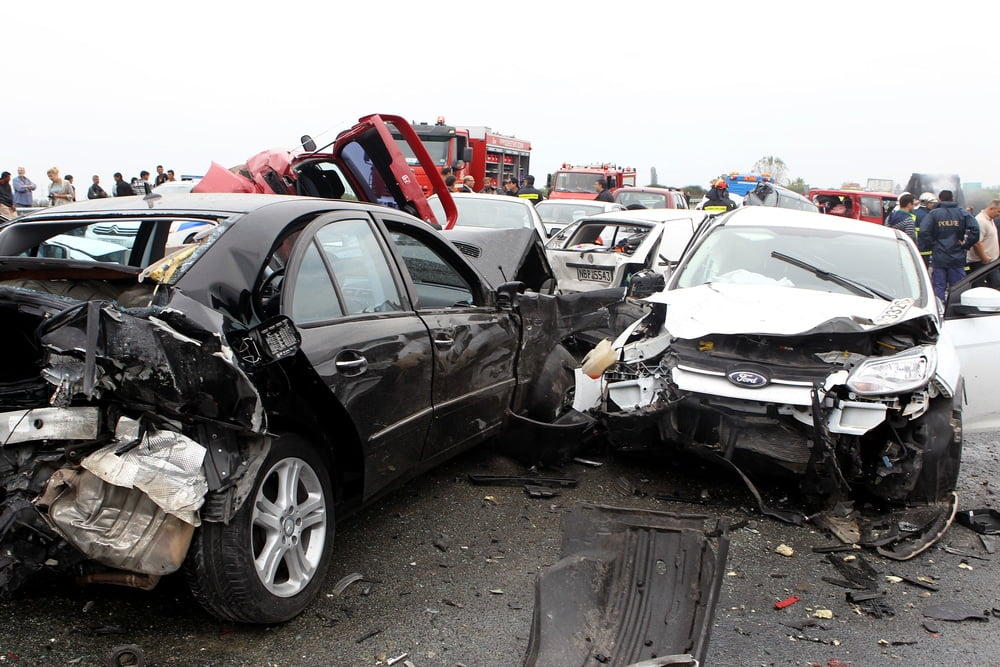
For starters, it’s important to note that there’s no set method for listing fault in these kinds of accidents. In some cases a single driver will have 100 percent of the fault placed on him or her, while in others multiple drivers may have some responsibility.
As an example, let’s say a driver rear-ends another, pushing the front car into yet another vehicle that’s in front of it. In this case, the driver of the first vehicle to make contact will be responsible for damages to both other vehicles, as they caused the damage. In other situations, though, multiple drivers can contribute to an accident taking place – think of a driver who goes through a red light at far too high a speed, but is then hit by someone who ran the opposing red light at the same intersection in an accident that also impacts a third vehicle. In this case, both the speeder and the driver who ran the red light could be at some degree of fault.
When a multi-car accident takes place in Utah, the first consideration for all drivers involved, even those who may not have been at fault, is their insurance. Utah is a no-fault auto insurance state, meaning that you’ll first use your PIP (Personal Injury Protection) insurance to pay for basic medical expenses or lost work time. Once this policy limit has been reached, which usually happens fairly quickly, drivers are able to use fault and liability to request damages from others involved in the accident.
Some other areas that may play a role in liability for multi-car accidents:
Like with any vehicle accident, multi-car collisions may involve mental trauma in addition to any physical injuries suffered. All car accidents are highly stressful in this manner, but those involving multiple cars – and potentially multiple successive dangerous scenarios – might make trauma symptoms even more severe. These symptoms may include the following areas:
It’s important to note that anyone involved in an accident can experience this sort of trauma, even passengers who were not driving. It’s important to seek help for any of these concerns, and to document such help in detail – you may be eligible for damages in this area.
In Utah, the first bit of coverage for your various accident-related expenses will come from your personal injury protection insurance, which is required under the state’s no-fault insurance laws. For this amount, it does not matter who was responsible.
However, once you exceed this limit, you may be due additional compensation in several areas:
And throughout this process, a personal injury attorney can prove invaluable in helping you to navigate the process. Multi-car accidents may have a variety of factors at play, but they are still very much subject to Utah’s laws and regulations when it comes to determining fault and collecting damages. An experienced attorney will know how to make sure you get the compensation that is due after an accident.
For more here, or to learn about any of our attorney services for clients around SLC, Draper, Provo and other parts of Utah, contact our team at the offices of William Rawlings & Associates today.
There are a few themes that are vital for almost any personal injury claim being filed, and documentation is one of these. Being able to provide detailed, accurate documentation of the incident will often play a huge role in the success of your claim, and one such form of documentation that's regularly considered and utilized here is a police report.
At the offices of William Rawlings & Associates, we're proud to assist with numerous personal injury cases for clients around Draper, Provo, Salt Lake City and other parts of Utah, from car and truck accidents to dog bite injuries, child injuries and more. In many such settings, a police report will serve as valuable documentation that may help with your claim and eventually receiving compensation. Here are some basics on what police reports are, the kinds of information typically found on them, and the important roles they often play in personal injury cases.
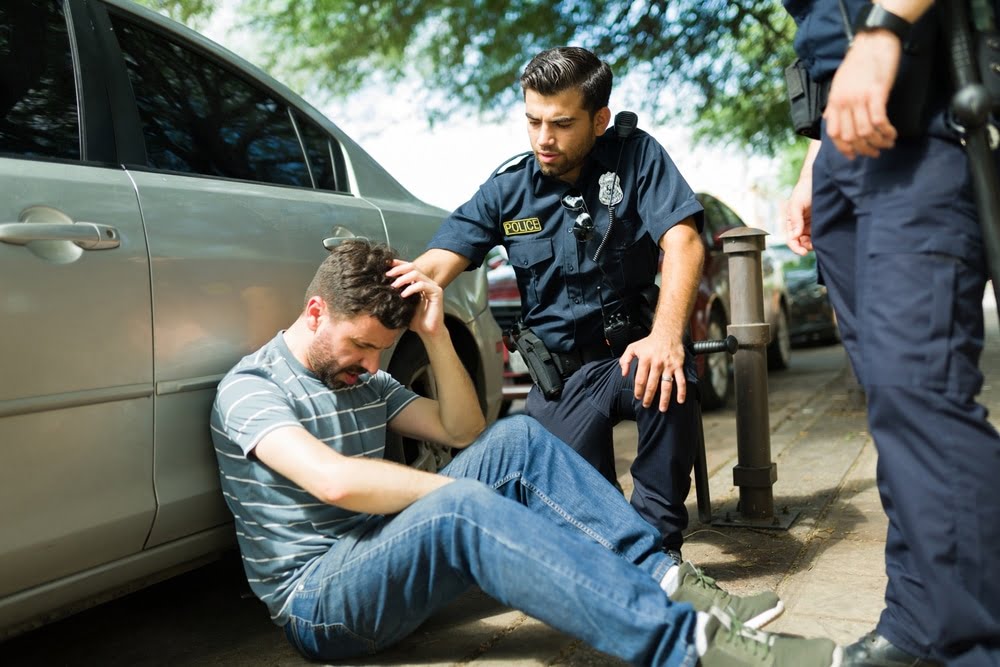
For those who have never been involved in a situation that included a police report before, it can be helpful to understand the basics of what these documents include. Generally speaking, a police report is documentation that's made by officers who are responding to an incident or crime scene. It's created as part of their investigation into the matter and will often provide key details on how they determined what happened, who was involved and more.
Police reports also often contain additional information that may be detailed, such as statements from witnesses (if applicable) and other key facts about the incident. This kind of documentation is essential for personal injury cases in particular, since it can provide a comprehensive overview of what happened and who was involved.
What kinds of information will be used by police in their reports of various incidents? Let's use a car accident as our hypothetical example here, as it's one of the most common scenarios where police reports are filled out - but if your case is something different, just adjust the particulars a bit. Some common pieces of info:
Essentially, police reports serve as key pieces of evidence in personal injury cases and should not be overlooked. They can provide a wealth of information that may help to determine who was at fault, whether you have a strong case or not and more. As such, it's important to obtain copies of the report (if possible) related to your incident before filing a claim with an attorney.
One area where police reports can carry particular weight is when dealing with insurance companies. These companies are always looking for ways to deny or reduce personal injury claims, but if you have a police report on your side that accurately reflects the incident and your involvement, it can be enough to tip the scales in your favor.
How you obtain a police report in your case will vary based on a few factors, such as your location and the type of incident. Generally speaking, though, you should be able to obtain a copy of any report from the police department that responded to the incident or from one of their local divisions; these requests are typically free when it comes to personal injury cases.
In some cases, you may be able to request a copy of the report from your attorney and they may be able to get it for you. Depending on how far along your case is, this can be one of the most expedient ways to get a police report.
No matter what kind of personal injury claim you may have, documentation plays an important role in its success. Police reports are often a major part of this, and knowing how they work can be vital.
For more here, or to learn about any of our personal injury attorney services for clients in Provo, Draper, SLC or other parts of Utah, speak to our team at the offices of William Rawlings & Associates today.
There are several different kinds of personal injury cases and claims out there, and perhaps the single most common and well-known surrounds car accidents. Car accident liability claims are quite common, involving one party making a claim against another for both monetary damages and bodily harm, and those who are in such a situation should know a few basic things before proceeding.
At the offices of William Rawlings & Associates, we're proud to offer the very best car accident attorney services you'll find in Utah, helping clients get their due compensation when involved in accidents that were the fault of another party. A major part of our value to clients involves explaining the liability claim process and helping walk them through it - with that in mind, here are some of the simple facts and approaches you should know about auto accident injury cases.

In most cases that will involve a personal injury claim, one of the first and most important steps to take while at the actual accident scene is to call the police. Police officers will typically arrive and take an official report of the incident, which can then be used later on as part of your evidence in making a claim for damages.
If anyone in your vehicle or others has been injured, this is also an opportunity to inform the police, and if needed you can even ask to be taken to a hospital for treatment.
While the first responsibility of police is to ensure safety and security at the scene, they will also typically produce an official written report of what happened. Make sure that you get a copy of this report to use as evidence when making your claim.
As part of making this written report, police responders will speak to witnesses and record their statements, so if there were any witnesses to the accident who you weren't able to speak directly with, the police report should include their testimony. These reports will also include things like the time, location, and other details of the incident which will be important in filing a claim.
While you're still at the scene of the accident, you should take any other evidence that may be available. This can include photos of the scene and vehicle damage, contact information from any witnesses who were present, and even a video recording if possible.
These pieces of evidence will help make your claim stronger when going before an insurance company or court of law - so it's important to collect as much of it as possible.
The next major step that should be taken after an auto accident is to contact a car accident attorney. This is especially true if there has been any kind of injury as a result of the incident - either physical or psychological.
An experienced attorney can help you understand your rights and guide you through the process of filing a claim for damages, whether against another individual or their insurance company. They will also be able to ensure that you are compensated for all of the damages incurred, both physical and financial.
One of the key elements your attorney will walk you through when filing a claim is the concept of fault and negligence. In most cases, you'll need to prove that someone else was responsible for causing the accident in order to receive compensation.
A qualified car accident lawyer will help by reviewing all of the evidence available and examining various factors such as speed, traffic conditions, vehicle maintenance history, and more in order to prove negligence on the part of another party. If successful, this is often a major step in winning your case and receiving the compensation you deserve.
Whether on your own or with the help of your attorney, it's important to know how to manage dealings with an insurance company. Insurance companies will often try to get out of paying for a claim and may even attempt to pressure you into settling for much less than what you deserve.
It's important in these cases that you are firm and stick to your guns when negotiating, or at least have the experience of an attorney to help you navigate these waters.
Depending on the specifics of the incident and the extent of harm that you have suffered, there are a variety of different damages that you may be able to file for in a personal injury claim. These include both economic damages such as medical expenses and lost wages, as well as non-economic damages like pain and suffering.
Your attorney can help you understand these different categories of damages and how to calculate them properly in order to maximize your compensation.
Overall, if you have been in an auto accident it's important that you first ensure your safety and then move through the necessary steps for filing a claim. It's also wise to contact an experienced attorney who can help guide you through the process and provide knowledgeable legal advice.
And at the offices of William Rawlings & Associates, we understand what it takes to win a personal injury case and are here to provide you with the guidance needed to fight for justice. Contact us today for more information or to schedule a free consultation.